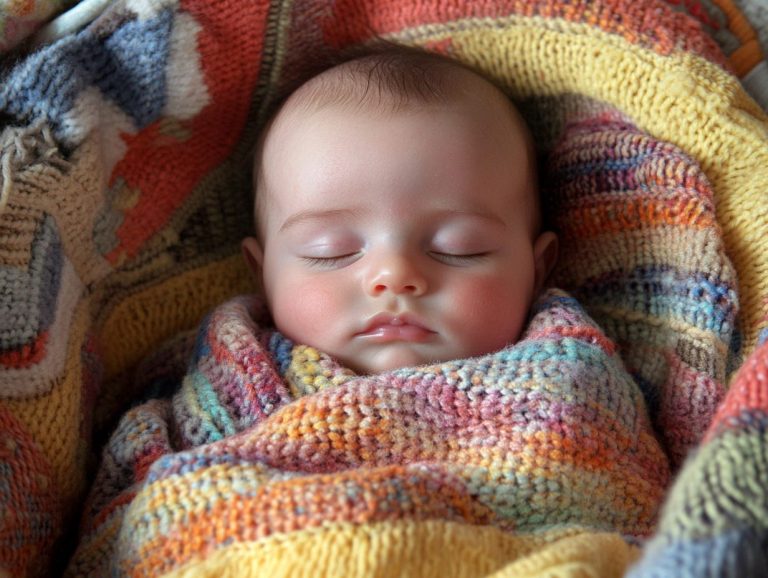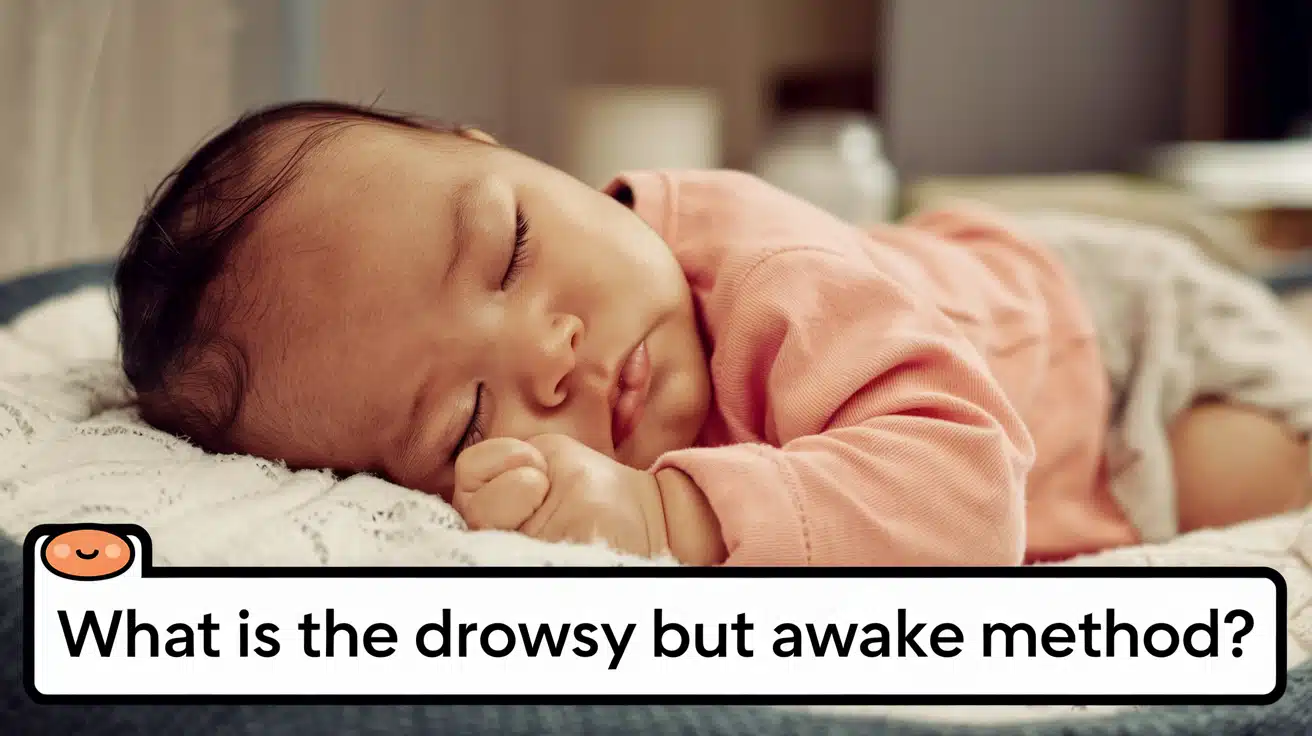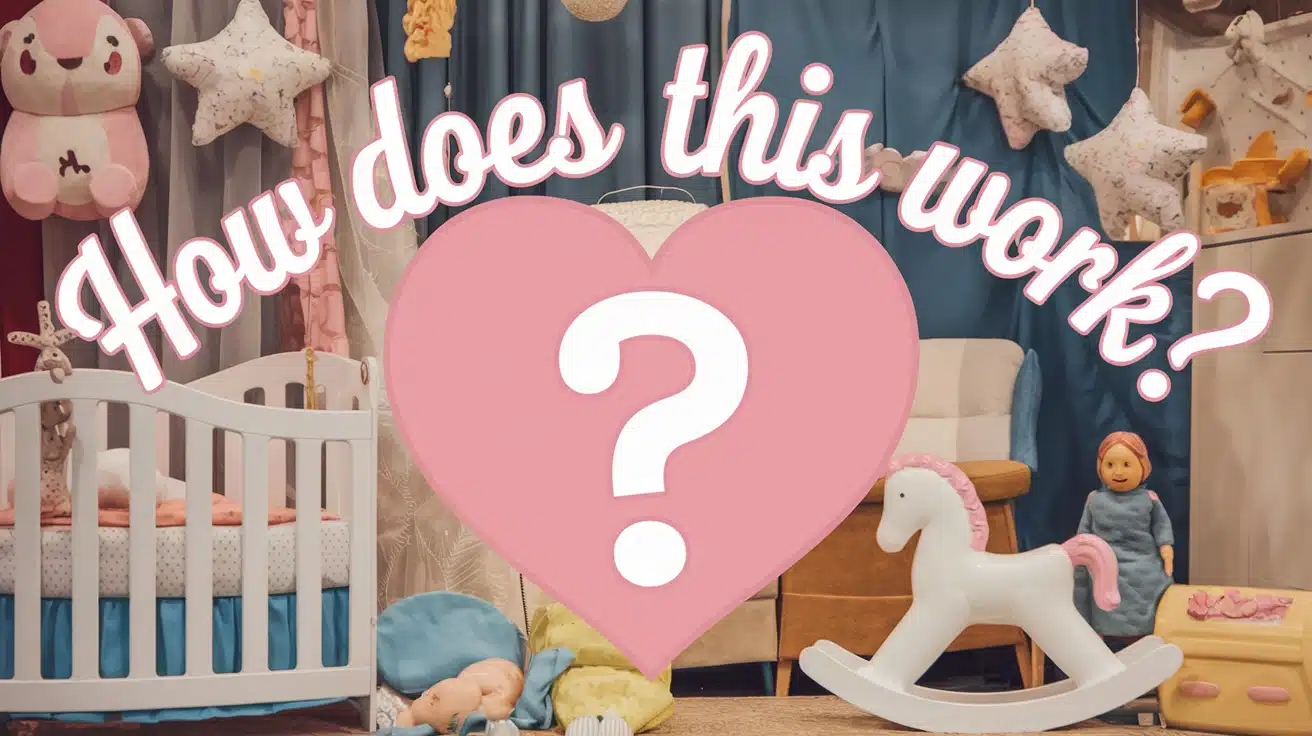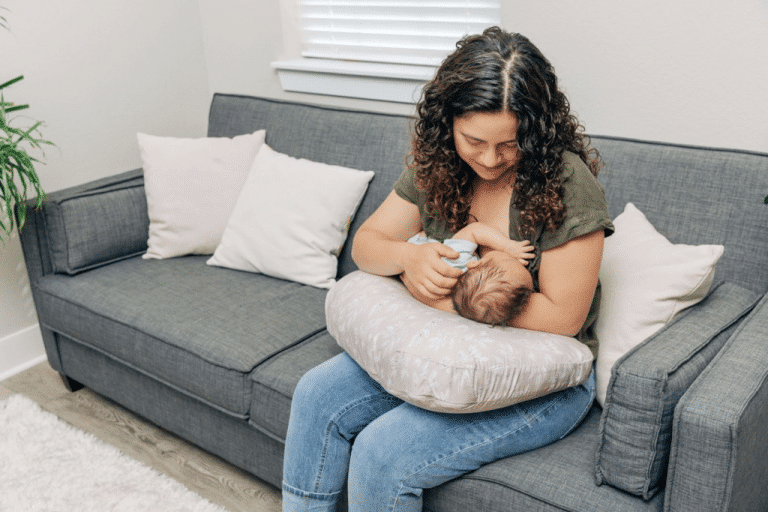Looking to help your baby sleep better? Parents often feel lost when their little ones fight sleep, waking up multiple times through the night.
You’ve probably heard of the drowsy but awake method, a gentle approach that teaches babies valuable self-soothing skills.
This method isn’t about leaving your baby alone to cry – it’s a balanced technique that helps build healthy sleep patterns.
Many parents see success with this approach, though it takes patience and consistent effort.
In this guide, we’ll break down the science behind this sleep training method, share practical tips for making it work, and explain why timing matters.
You’ll learn exactly how to tell when your baby is ready and the steps to follow for the best results.
What is the Drowsy but Awake Method
The drowsy but awake method means putting your baby in their crib when they’re sleepy but not completely asleep.
Think of it as that sweet spot when your baby’s eyes are heavy and calm but still somewhat alert. It’s like when you’re comfy in bed and feeling tired but haven’t drifted off yet.
This approach isn’t about leaving your baby to cry or forcing them to sleep – it’s about creating opportunities for them to learn how to drift off naturally in their sleep space.
Some babies take to it quickly, while others need more time and practice. The key is recognizing when your baby is getting tired but hasn’t passed into that overtired, fussy stage.
Most parents find their baby is drowsy after a feeding, bath, or play session.
During these moments, your little one might be quiet, less active, and show signs of sleepiness without being completely out.
Why Use This Method
When babies always fall asleep in your arms, or while feeding, they might get confused when they wake up alone in their crib later.
It’s like falling asleep on the couch and suddenly finding yourself in bed – a bit startling. By using this method, your baby learns to be comfortable falling asleep in their own space.
This approach helps in several ways:
- Your baby builds confidence in falling asleep independently
- They learn to connect their sleep cycles naturally
- Night wakings become less disruptive since they’re familiar with their sleep environment
- Parents can establish more predictable sleep patterns
- It supports healthy sleep habits that can last into toddlerhood
Babies sleep in cycles lasting about 45 minutes. When they can fall asleep on their own, they’re better able to link these sleep cycles together without needing help.
Plus, this approach works well with breastfeeding since it doesn’t mean skipping any feeds – your baby will wake up when truly hungry.
How Does This Method Work
The key is watching for signs that your baby is getting tired. Look for clues like:
- Rubbing their eyes
- Getting a bit fussy
- Yawning more than usual
- Pulling their ears
- Being less active
- Decreased interest in toys or activities
- Slower movements
- Less social engagement
Start your bedtime routine when you notice these signs. A good routine might include:
- A calm, warm bath
- Changing into nighttime clothes
- A quiet feeding session
- Gentle rocking or patting
- A short lullaby or story
- Placing baby in their crib while still awake but drowsy
Remember that timing matters a lot. If you wait too long and your baby becomes overtired, they’ll be harder to settle. It’s better to start your routine early rather than trying to catch up with an exhausted baby.
The goal isn’t perfection – some nights will go better than others. What matters is consistency and patience.
You might need to stay nearby at first, offering gentle reassurance with a soft touch or quiet voice. Over time, most babies learn to welcome their sleep space and drift off more easily on their own.
Challenges with The Drowsy but Awake Method
Just like every baby is unique, each family’s experience with this method can vary. Some common challenges that people might face include:
- Your Baby May Cry when Put Down: This is normal at first. Many babies protest this new way of falling asleep. Try staying nearby and offering gentle touches or soft words of comfort. You can put your hand on their tummy or pat their back to help them feel secure.
- Some Days Feel Like Steps Backward: Your baby might do well for a few days, then seem to forget everything. This often happens during growth spurts, teething, or minor illnesses. Don’t get discouraged – it’s perfectly normal and temporary.
- Different Babies Need Different Timing: While some babies show clear tired signs, others might be trickier to read. You might need to experiment with timing to find your baby’s ideal drowsy window. Watch your baby closely throughout the day and keep notes if it helps.
- Age Makes a Difference: A 2-month-old will respond differently than a 6-month-old. Younger babies often need more help and comfort, while older ones might adapt more quickly. Work with your baby’s developmental stage rather than fighting against it.
Expert Tips to Apply the Drowsy but Awake Method
Learn practical strategies from our sleep experts to help your baby fall asleep independently. These proven tips focus on creating the right environment, understanding sleep signs, and avoiding common setbacks.
Creating an Optimal Sleep Environment
Start with a dark, quiet room at a comfortable temperature (68-72°F). Use white noise if helpful and blackout curtains to block light. Keep the crib space simple – just a firm mattress with a fitted sheet.
Understanding Baby’s Unique Sleep Patterns
Pay attention to when your baby shows signs of tiredness. Common signals include:
- Slowing down of activity
- Less social engagement
- Rubbing eyes or ears
- Becoming fussy
- Starting to yawn
Time your bedtime routine to match these natural patterns. Most babies can’t stay awake longer than 1-2 hours between naps in early months.
Avoiding Common Mistakes
Overstimulating Before Bedtime
Skip bright screens and excited play near sleep time. Instead, try calming activities like:
- Quiet reading
- Gentle rocking
- Soft singing
- Light massage
- Peaceful cuddles
Inconsistent Application
Stay steady with your approach. If you switch between different methods, your baby might get confused. This means:
- Following the same routine daily
- Keeping regular sleep times
- Being patient during adjustment periods
- Maintaining consistency even during tough nights
Remember, success looks different for each family. Focus on progress rather than perfection, and adjust the method to fit your baby’s temperament and needs.
When to Seek Professional Help
While sleep challenges are normal, sometimes you might need extra support.
Consider talking to a sleep expert if:
- Your baby seems genuinely distressed rather than just protesting the change
- You’ve tried the method consistently for several weeks with no improvement
- Your baby’s sleep patterns worry you or seem unusual
- You notice your baby is often overtired despite your best efforts
- The current situation is affecting your own well-being significantly
- Your baby’s sleep issues are impacting their daytime mood and development
A sleep consultant or your pediatrician can:
- Review your current routine and suggest helpful adjustments
- Create a personalized plan that fits your family’s needs
- Check for any underlying issues affecting sleep
- Provide support and guidance as you work through changes
- Help you understand what’s normal for your baby’s age
Remember, asking for help isn’t a sign of failure – it’s a smart way to get back on track. Many families benefit from professional guidance, even if it’s to confirm they’re on the right path.
Conclusion
Teaching your baby to fall asleep using the drowsy but awake method takes time and patience, but the long-term benefits make it worthwhile.
This gentle approach helps your little one build confidence in their ability to self-soothe and sleep independently, leading to better rest for the whole family.
Remember that every baby is different – while some adapt quickly, others need more time and support. The key is staying consistent and responding to your baby’s unique needs.
If you’re feeling overwhelmed, don’t hesitate to reach out to your pediatrician or a sleep consultant for guidance.
Are you using the drowsy but awake method with your baby? Share your experience in the comments below.
For more sleep tips and baby care advice, check out our guide on establishing healthy bedtime routines.
Frequently Asked Questions
Does Drowsy but Awake Work?
Yes, the method works when practiced consistently. While some babies adapt quickly, others need more time. Success depends on timing, patience, and following your baby’s sleep cues.
Why Am I Sleepy but Awake?
Your body might feel tired while your mind stays active due to stress, screen time before bed, irregular sleep schedule, or too much caffeine late in the day.
Why Do I Feel Tired but Awake?
This often happens due to mental stimulation despite physical tiredness. Common causes include stress, anxiety, too much screen time, or poor sleep habits.















